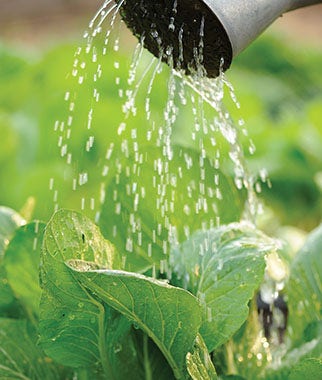We use cookies to give you the best experience on our website. These cookies are completely safe and secure and will never contain any sensitive information. Please read our Privacy Policy. By clicking "Ok" or clicking on any other content, you agree that cookies can be placed.
Drought Plant Care
It’s hard for gardeners as nurturers to avoid our instincts to go to all lengths to care for our plants. But during seasons where there is widespread drought, we have to swallow hard and realize that we are at the mercy of the weather and obligated by ordinances and our desire to be good neighbors to water our plants much less than we might desire. Given the magnitude of the drought in the Midwest and continued drought in the south, many of us may face watering restrictions or bans for much of the growing season.
The first, and perhaps most difficult, step is to decide how to spread out your watering efforts. Restrictions vary through out drought areas that now comprise about 50 percent of the US. To keep the highest percentage of your plants thriving while conserving water, consider certain factors. Perennial plants that have been in the garden for over a year have deeper root systems will likely do better without water than recently added plants. Water the newest editions to your gardens first. After those, check to see which of your plants are least tolerant of drought. Certain plants like Ligularia and Plumbago need extra water. Depending on the severity of the drought and the strictness of water restrictions, parcel out the water to the most needy of your plants. Skip watering plants that are drought tolerant.
You might need to prioritize the health of the plants that mean the most to you. Yes, you have to play favorites with your plants. Water plants that you’re emotionally attached to, or plants that thrill you more than your average daylily, first. Basically, keep your prized plants alive.
Honestly, in much of the country this summer, it’s the best call to let your lawn go dormant and brown out. Grasses tolerate dry periods and will bounce back as temps cool and rain returns. This probably isn’t true of many delicate annuals. Container annuals need to be watered nearly daily and won’t perform for you if not well watered. Some hard hit communities allow watering only once a week during drought. As difficult as it is, you might want to put your pots in the garage once they begin to look scraggly and use your precious water to keep your valuable – and longer-lasting – perennial plants alive. Revisit annuals come fall.
Stretch the amount of water you can give your plants by employing a bit of creativity. Any household grey water from baths, showers, washing machines can be used in limited quantities on gardens. On vegetable gardens, I’d be extremely careful of grey water. Try wiping down your car with only water in a bucket then reuse that water to nourish a recently planted cherry tree. Use only the cleanest grey water on edibles. Left over drinks can be used in moderation on gardens. Club sodas or seltzers are safe, flavored and sugary sodas aren’t. Coffee can be used in moderation – once cool – to quench thirsty plants. Dilute the coffee if possible. Don’t worry – the plants won’t become hyper because of the caffeine.
Two excellent sources of clean water are what if any rain harvested in a rain barrel and water accumulated in a dehydrator. These are two sources to consider drought or no drought.
Normal good watering practices should be followed as much as possible. Water in the early morning to allow water to seep in before the heat of the day would cause evaporation. Soak the earth to encourage roots to grow deep into the soil where they will be protected. Water at the base of the plant and keep moisture off the foliage. For vegetables, give priority to varieties that are fruiting or in flower. Water new trees through the area under the drip line of the tree where the roots are concentrated.
Another way to conserve water is with mulch. A good covering of mulch helps keep water from evaporating from the soil. Be careful not to smother plants or have too much mulch touching the base of the plant. More than 2 inches of mulch can also create a barrier to moisture going into the ground. Super thick mulch mats together and keeps water seeping in the soil.
As hard as it is to watch our gardens suffer, as with many things in the garden, we can’t control the amount of rain we get. Take heart. If you lose a few plants this year, it gives you a good excuse to add and experience new plants next spring.

